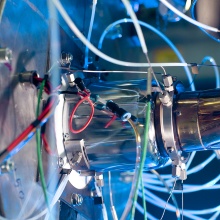Today’s civilian turbo aircraft engines feature nearly 100% reliability and availability. These are the fundamental prerequisites for smooth, on-time and, above all, safe airline operations. In view of the many millions of flights yearly and the continually rising demand, these attributes of the current generation of aircraft turbo engines will also remain exceptionally significant in the future.
Monitoring engine condition with ILA software
To achieve this reliability, engine condition is continually monitored by a dedicated set of sensors. The measured values are compared with a model of the respective engine. Deviations between the model values and measurement values induce changes in the engine. From the time curve of the deviations it is possible to forecast the timing and scope for the maintenance that will eventually have to be performed. Modern methods for analyzing time series are used for this. Among others, these include Kalman filters, Bayesian forecasting, dynamic time warping and wavelet analysis. The Institute of Aeronautical Propulsion Systems has developed its own software package called HealthGT™ to handle these tasks.
Contact

Stephan Staudacher
Prof. Dr.-Ing.Head of Institute


